Transforming your bookshelf from chaotic clutter to organized beauty requires the right strategy tailored to your reading habits and space. Whether you're working with a towering floor-to-ceiling library or compact floating shelves, effective organization can enhance both functionality and aesthetics. From traditional alphabetical systems to creative color-coding methods, each approach offers unique benefits for different lifestyles and preferences. Smart organization not only makes finding your favorite titles easier but also creates an attractive focal point that reflects your personality. The key lies in choosing methods that match how you interact with your collection daily while maintaining visual appeal throughout your living space.

1. Rainbow Color Organization System

Organizing books by color creates a stunning visual impact that transforms your bookshelf into living artwork. Start by grouping all books into color families, beginning with red, progressing through orange, yellow, green, blue, and purple, then finishing with neutral tones like white, black, and brown. This method works particularly well for visual thinkers who remember books by their cover colors rather than titles or authors. While some critics argue it's purely aesthetic, many readers find they can locate books surprisingly easily once familiar with the system. The rainbow effect creates smooth color transitions that are pleasing to the eye and photograph beautifully for social media. Consider sub-organizing within each color group by shade intensity or size for added refinement and easier book retrieval.
2. Alphabetical Author Organization Method

Alphabetical organization by author's last name provides the most systematic approach for serious readers with extensive collections. Create designated sections for each letter, starting with A and progressing through Z, just like a traditional library system. This method proves invaluable for readers who remember authors better than titles and works exceptionally well for large collections where quick location is essential. Within each author section, arrange books chronologically by publication date or alphabetically by title. This system particularly benefits readers who collect multiple works from favorite authors, keeping series and standalone novels together. Consider using shelf dividers or bookends labeled with letters to clearly mark sections. The alphabetical system scales beautifully from small personal libraries to extensive home collections.
3. Genre-Based Organization Approach

Genre organization creates intuitive groupings that match your reading moods and preferences perfectly. Establish clear categories such as fiction, non-fiction, mystery, romance, science fiction, fantasy, biography, history, and self-help. This method allows you to browse by your current interests and makes recommendations easier when lending books to friends. Create subcategories within broader genres for more refined organization, such as separating contemporary fiction from classic literature or dividing non-fiction into business, health, and travel sections. Visual markers like colored tape on book spines or small shelf labels help maintain organization and guide family members or guests. Genre organization also reveals reading patterns and gaps in your collection, making future book purchases more intentional and diverse.
4. Height and Size Arrangement Strategy
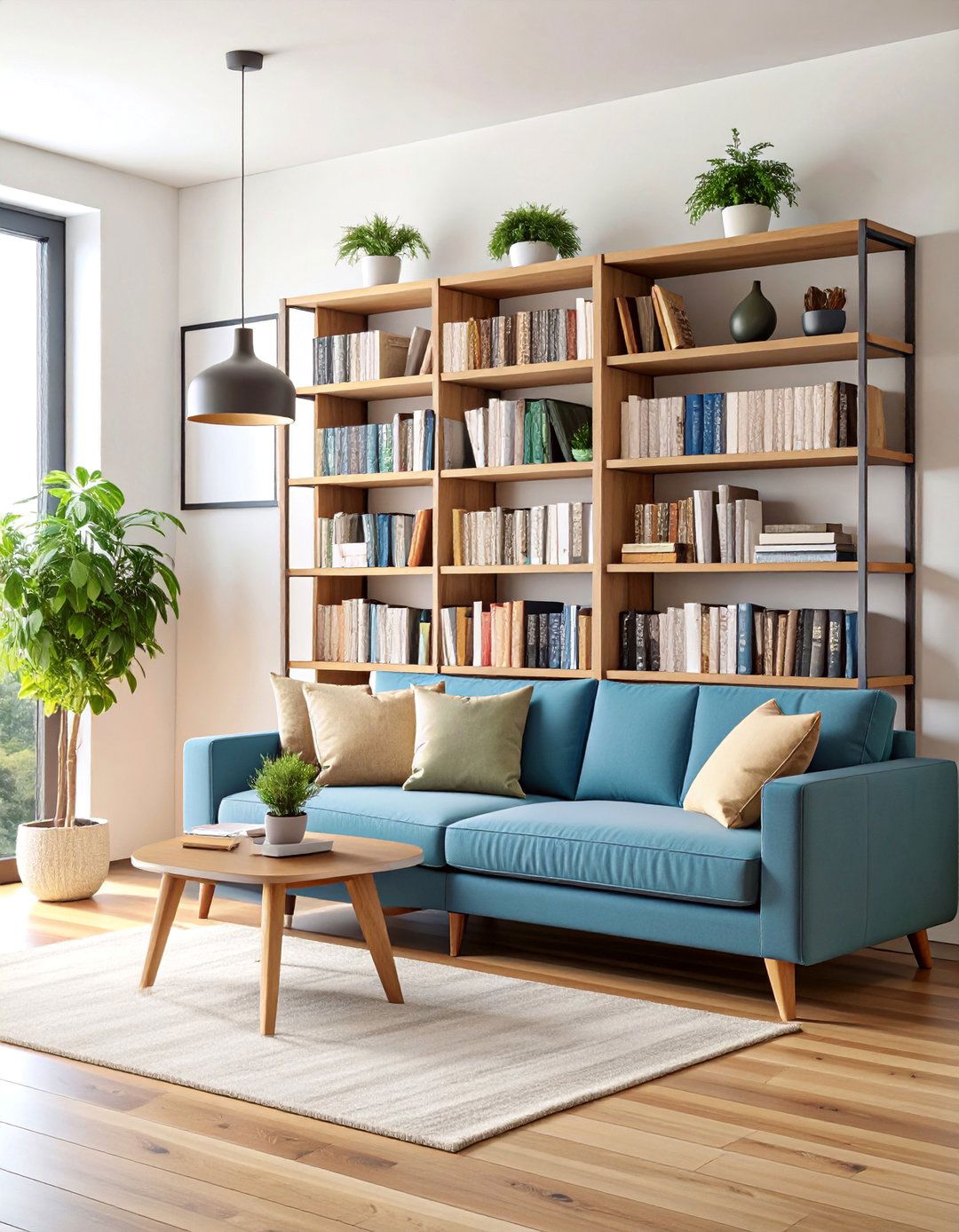
Organizing books by height creates clean, aesthetically pleasing lines while maximizing shelf space efficiently. Group books into categories: oversized coffee table books, standard hardcovers, trade paperbacks, mass market paperbacks, and small specialty books. This method prevents awkward gaps and unstable stacking while creating visual harmony across your shelves. Place taller books on lower shelves for better stability and easier access to frequently used references. Mix horizontal and vertical stacking to add visual interest and accommodate different book dimensions. This system works particularly well for readers who prioritize visual appeal and have diverse book formats. Consider using adjustable shelving to accommodate different height categories and prevent wasted vertical space between shelves.
5. Frequency-Based Access Organization

Organize books based on how often you reference them, placing frequently accessed titles at eye level and within easy reach. Create zones for daily reads, weekly references, occasional browsing, and archival storage. This practical system ensures your most-used books are conveniently located while less-accessed volumes occupy harder-to-reach areas like top shelves or behind other books. Consider seasonal rotation, moving summer reading to prime locations during warmer months and holiday books to accessible spots during appropriate seasons. Include a "currently reading" section for books in progress and a "next to read" area for upcoming selections. This method proves especially valuable for students, researchers, or professionals who regularly reference specific materials for work or study purposes.
6. Series and Collection Grouping

Keep book series and collections together to maintain narrative continuity and create satisfying visual blocks of related content. Group all books from the same series chronologically, regardless of publication order or author's other works. This method proves invaluable for fantasy, mystery, and romance readers who follow complex multi-book storylines. Include companion books, prequels, and spin-offs with their parent series for complete story experiences. Consider organizing series by reading order rather than publication order, especially for books with complex timelines or multiple interconnected storylines. Visual consistency emerges when series books share similar cover designs or publisher formatting. This system also helps identify missing volumes in incomplete series, making future purchases more targeted and collection building more intentional.
7. Dewey Decimal Classification System
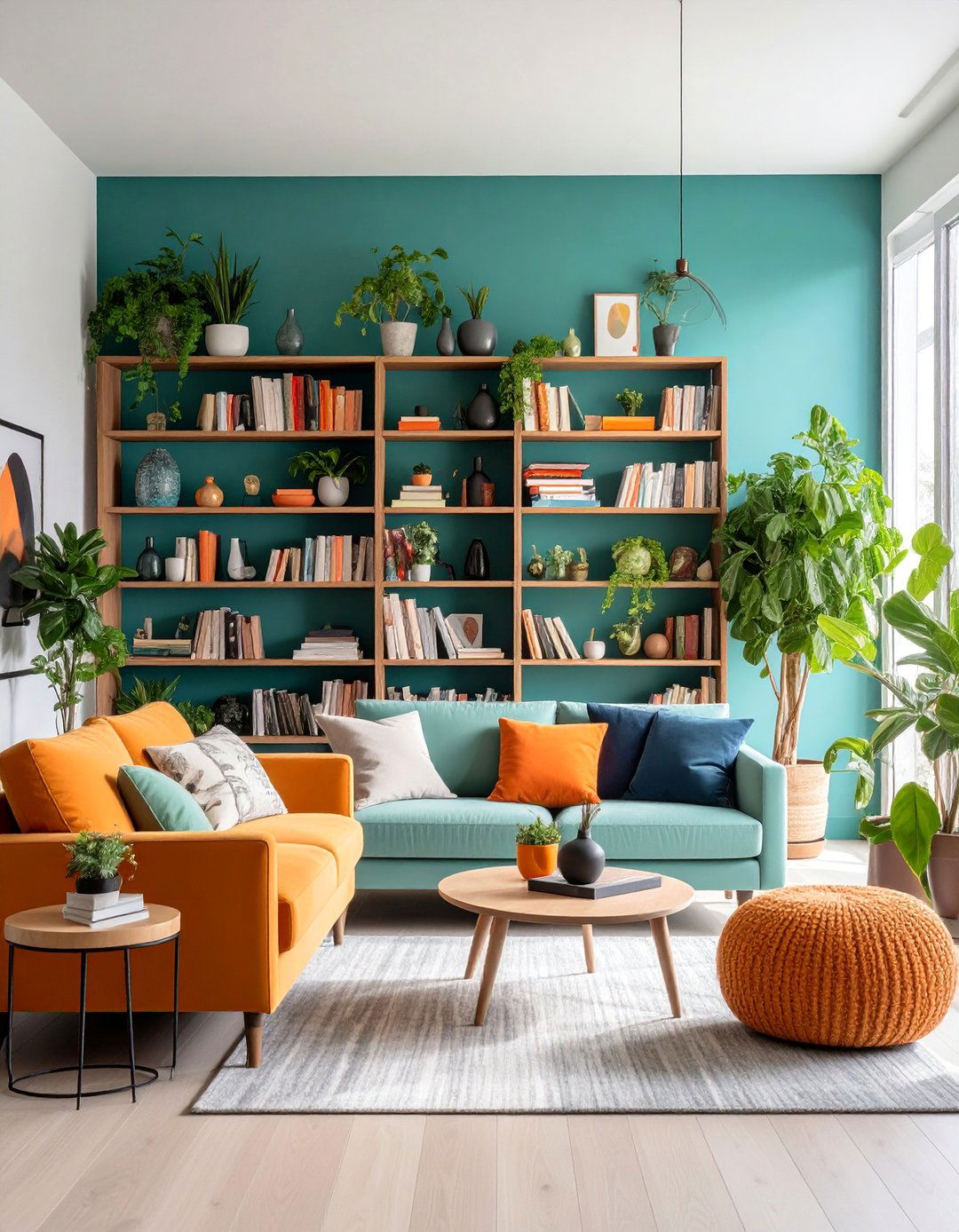
Implement a simplified version of the Dewey Decimal System for a professional library feel that organizes non-fiction books by subject matter systematically. Use major classifications like 000-099 for computer science and general knowledge, 100-199 for philosophy, 200-299 for religion, 300-399 for social sciences, 400-499 for language, 500-599 for science, 600-699 for technology, 700-799 for arts, 800-899 for literature, and 900-999 for history and geography. This method works exceptionally well for academic collections, reference libraries, or serious non-fiction readers. Create simple numbered labels for easy shelf identification and book placement. While initially time-consuming to implement, this system provides unparalleled organization for research purposes and creates a legitimate home library atmosphere that's both functional and impressive.
8. Floating Shelf Display Organization
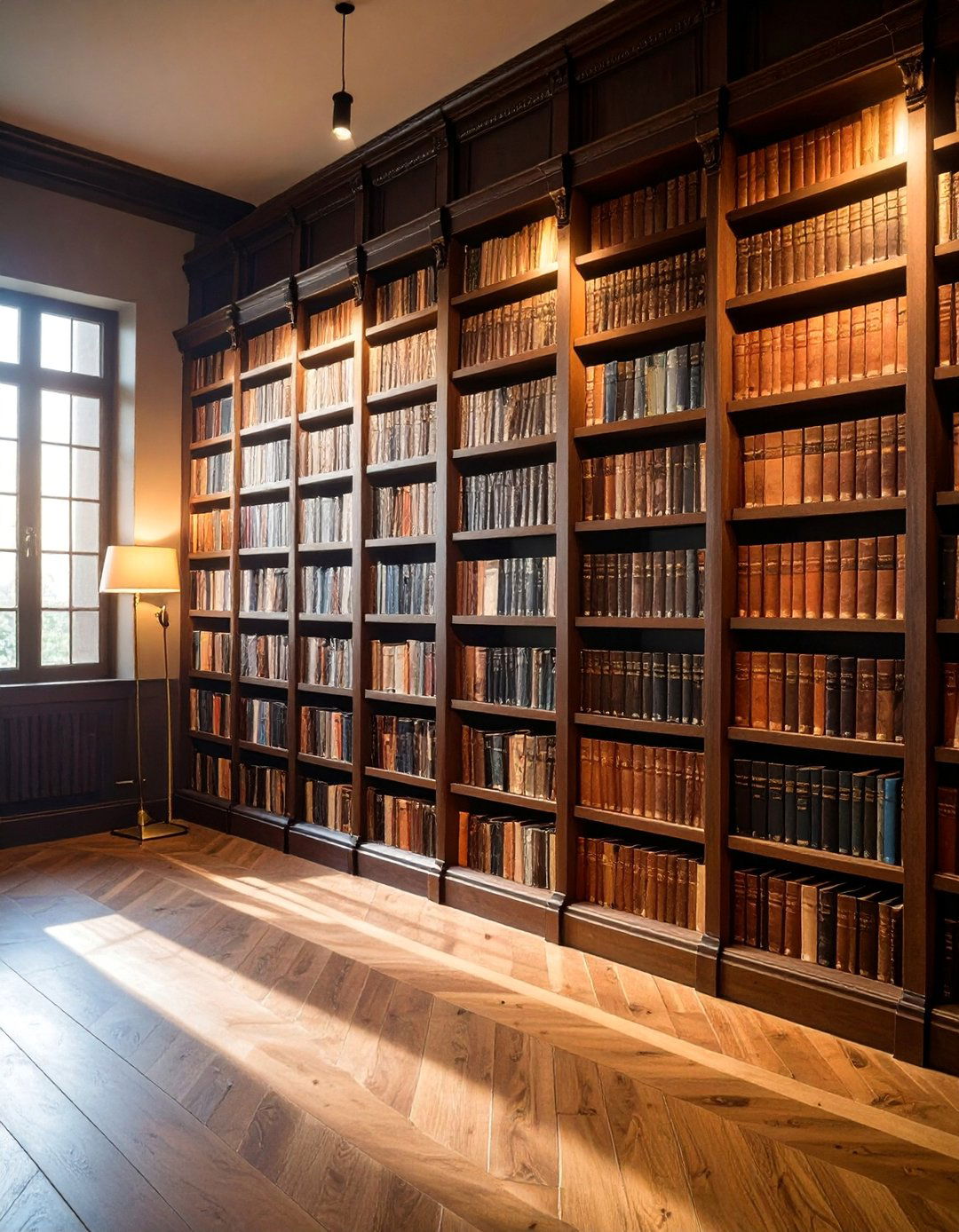
Maximize wall space with floating shelves that create an illusion of books suspended in air while providing flexible storage solutions. Install shelves at varying heights to accommodate different book sizes and create visual interest through asymmetrical arrangements. Use invisible floating brackets that hide completely behind books for a clean, modern aesthetic. This method works particularly well in small spaces where floor-standing bookcases aren't practical. Organize floating shelves by function: feature favorite books at eye level, place reference materials within easy reach, and use higher shelves for decorative or seasonal displays. Consider installing shelves in unexpected places like hallways, above doorways, or in bedroom corners. The vertical storage maximizes space efficiency while creating stunning wall displays that serve as functional art installations.
9. Basket and Container Organization
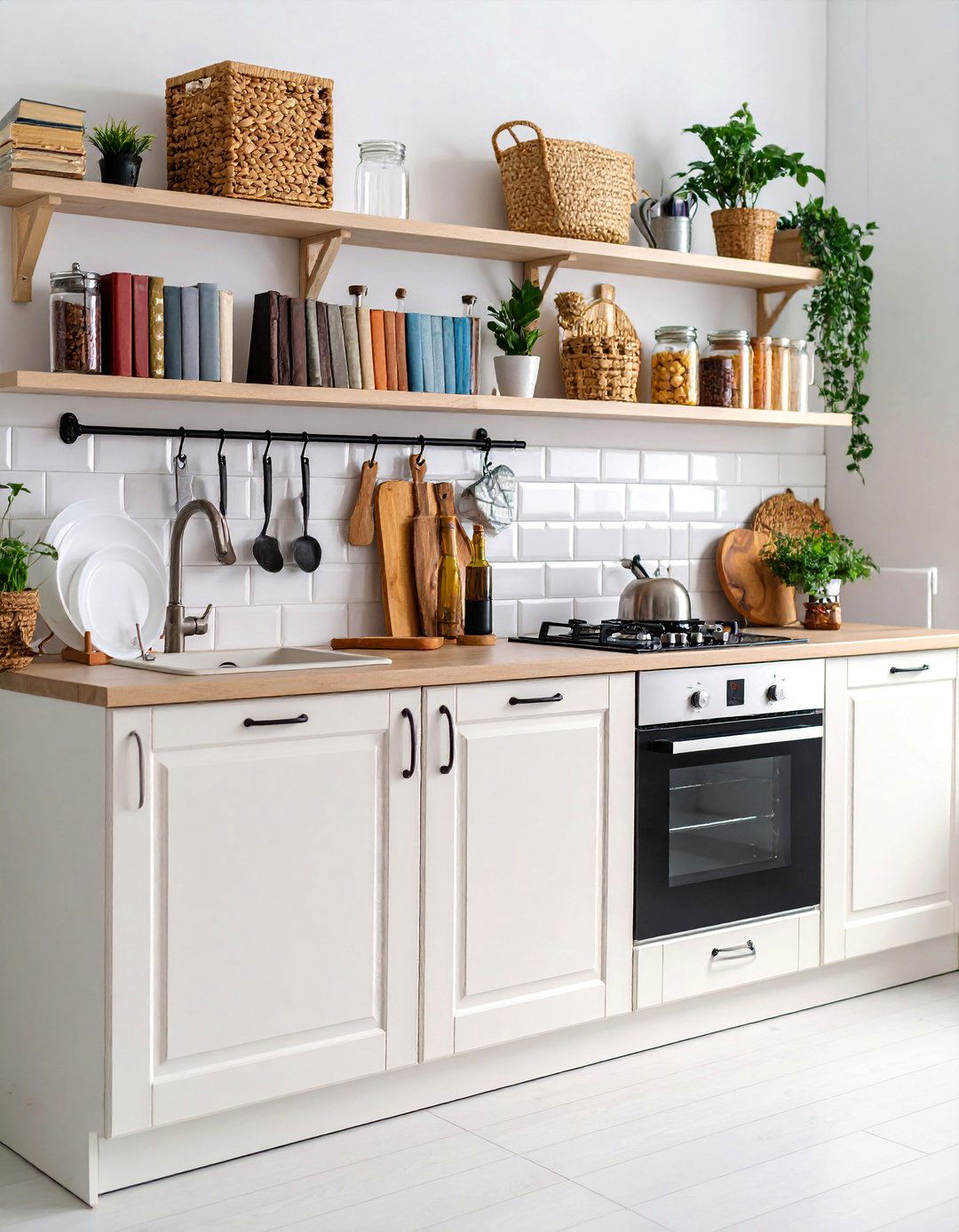
Incorporate attractive baskets and containers to create organized storage while adding textural variety to your bookshelf display. Use woven baskets for children's books, keeping board books and picture books easily accessible for little hands. Store paperback series in labeled containers to prevent spine damage and maintain neat appearances. Utilize decorative boxes for books you want to preserve but don't access frequently, such as rare editions or sentimental volumes. This method combines practical storage with aesthetic appeal, breaking up the monotony of book spines with interesting textures and materials. Choose containers that complement your decor style, from rustic wicker baskets to sleek acrylic boxes. Include pull-out labels or tags for easy identification without disrupting the clean appearance of container storage.
10. Seasonal and Thematic Rotation

Create dynamic bookshelf displays by rotating books seasonally and organizing around current themes or interests. Feature summer reading selections during warm months, cozy mysteries in autumn, holiday books in December, and gardening guides in spring. This method keeps your bookshelf fresh and relevant while highlighting appropriate books for current activities and moods. Create special displays for book club selections, recently purchased titles, or books related to current events and anniversaries. Include decorative elements that complement seasonal themes, such as small pumpkins with autumn reads or beach shells with summer novels. This approach encourages regular interaction with your collection and helps rediscover forgotten books. Seasonal rotation also provides natural opportunities for collection assessment and periodic decluttering.
11. Mixed Media Integration Organization

Combine books with decorative objects, plants, and artwork to create visually interesting and personalized bookshelf displays. Alternate book sections with framed photos, small sculptures, candles, and potted plants to break up uniform book spines and add personality to your shelves. Use horizontal book stacks as platforms for displaying decorative objects, creating layered arrangements that add depth and visual interest. This method transforms functional storage into curated displays that reflect your interests and aesthetic preferences. Include meaningful objects like travel souvenirs, family heirlooms, or hobby-related items to create conversation starters and personal connections. Balance books with decorative elements using the rule of thirds, ensuring neither books nor decor overwhelm the display. Regular rotation of decorative elements keeps the arrangement fresh and seasonally appropriate.
12. Favorite Authors Spotlight Organization

Dedicate specific sections to showcase your favorite authors, creating mini-collections that highlight beloved writers and their complete works. Group all books by each preferred author together, including their various series, standalone novels, and different editions. This method celebrates literary relationships and makes it easy to locate any book by cherished writers. Consider organizing author sections chronologically by publication date to track writing evolution and career development. Include related materials like author biographies, interviews, or critical essays to create comprehensive author studies. Visual coherence often emerges naturally when multiple books share similar publisher formatting or cover designs. This organization method works particularly well for readers who follow specific authors religiously and enjoy rereading favorite works. Create special emphasis through bookends, small portraits, or biographical information cards.
13. Reading Status Organization System

Organize books according to your reading status to create functional zones that support your reading habits and goals. Establish distinct sections for "currently reading," "next to read," "favorites to reread," and "completed but keeping." This system provides clear visual tracking of your reading progress and helps prioritize future selections. Place currently reading books in the most accessible location, next to read selections nearby, and completed books in designated areas. Include a special section for books borrowed from friends or library books with due dates requiring attention. This method proves especially valuable for avid readers managing multiple books simultaneously or those working toward specific reading goals. Consider using bookmarks, sticky notes, or small labels to track reading dates and progress through longer works.
14. Kitchen Cookbook Organization Station

Transform your kitchen into a functional culinary library by organizing cookbooks near your cooking area for easy reference during meal preparation. Group cookbooks by cuisine type, cooking method, or meal category to streamline recipe searches. Keep everyday favorites at eye level and within arm's reach of your primary cooking workspace. Store seasonal cookbooks like holiday baking or summer grilling guides in easily accessible locations during appropriate times. Include small shelves or ledges for propping open books during cooking, preventing damage from kitchen splashes. This method creates an inspiring cooking environment while keeping reference materials conveniently located. Consider organizing by difficulty level, with quick weeknight recipes easily accessible and elaborate weekend project cookbooks in dedicated sections. Include space for personal recipe collections, cooking magazines, and printed recipes from online sources.
15. Children's Book Organization by Age

Create age-appropriate book zones that support child development and encourage independent book selection. Organize board books and cloth books on low, easily accessible shelves for toddlers to explore safely. Place picture books at child height with spines facing out so young readers can identify favorites by cover illustrations. Create separate sections for early readers, chapter books, and young adult novels as children grow and develop reading skills. This method promotes reading independence while ensuring age-appropriate content is readily available. Include labeled bins or baskets for different categories, making cleanup easier and teaching organizational skills. Consider organizing by reading level within age groups to support progression and confidence building. Rotate seasonal books and holiday stories to maintain interest and create special reading experiences throughout the year.
16. Vintage and Rare Book Preservation
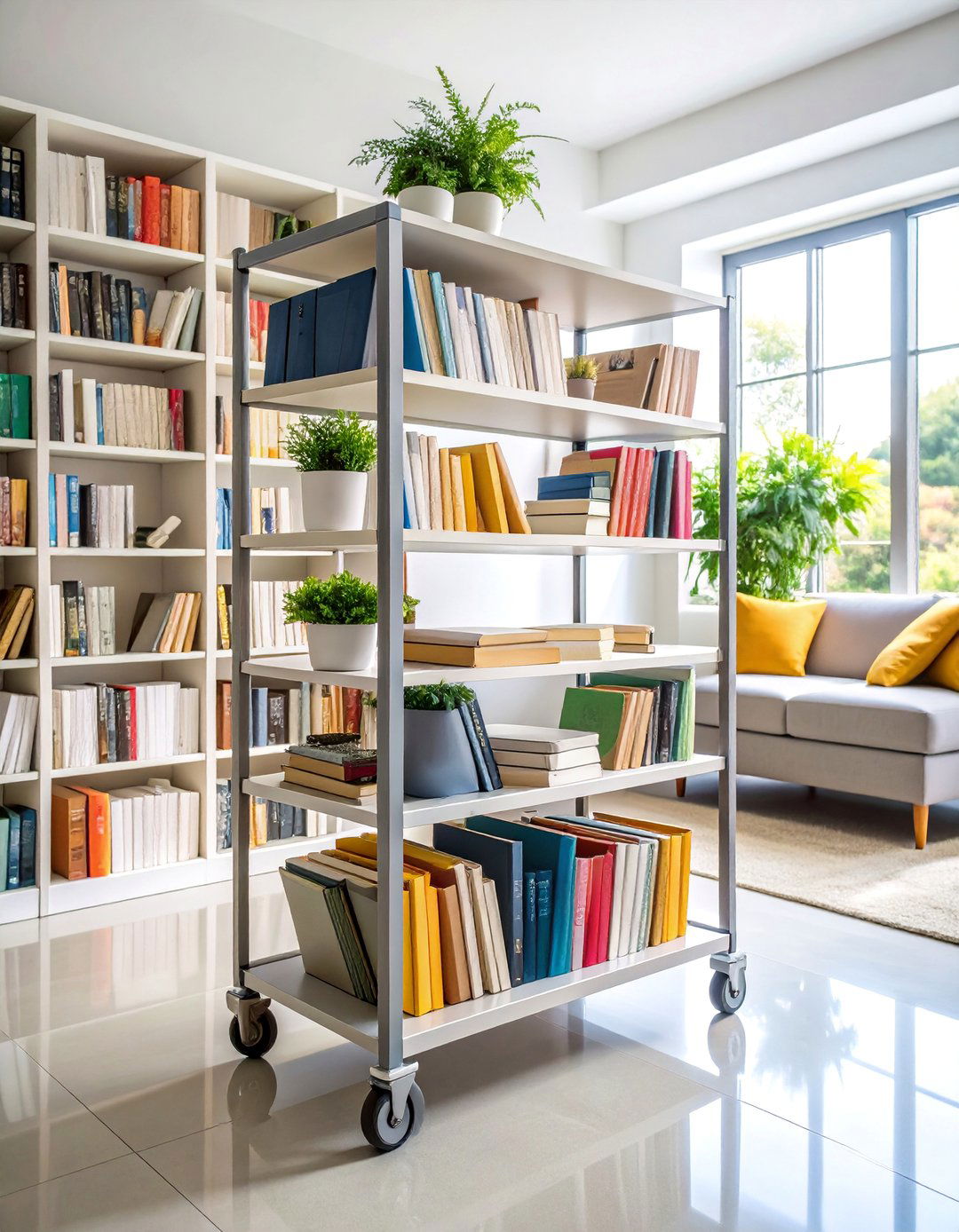
Implement specialized organization for vintage, rare, or valuable books that require careful handling and preservation. Store precious volumes in protective cases or on shelves away from direct sunlight and humidity fluctuations. Group rare books by era, publisher, or significance rather than integrating them with everyday reading materials. This method ensures proper care while creating museum-quality displays that showcase literary treasures. Include archival bookends and supports to prevent spine damage from leaning or pressure. Consider temperature and humidity control in storage areas, especially for extremely valuable or fragile editions. Use white cotton gloves when handling rare books and avoid placing them in high-traffic areas where accidental damage might occur. Document collection details including acquisition dates, condition notes, and insurance valuations for valuable items requiring special protection.
17. Digital Integration Organization Method
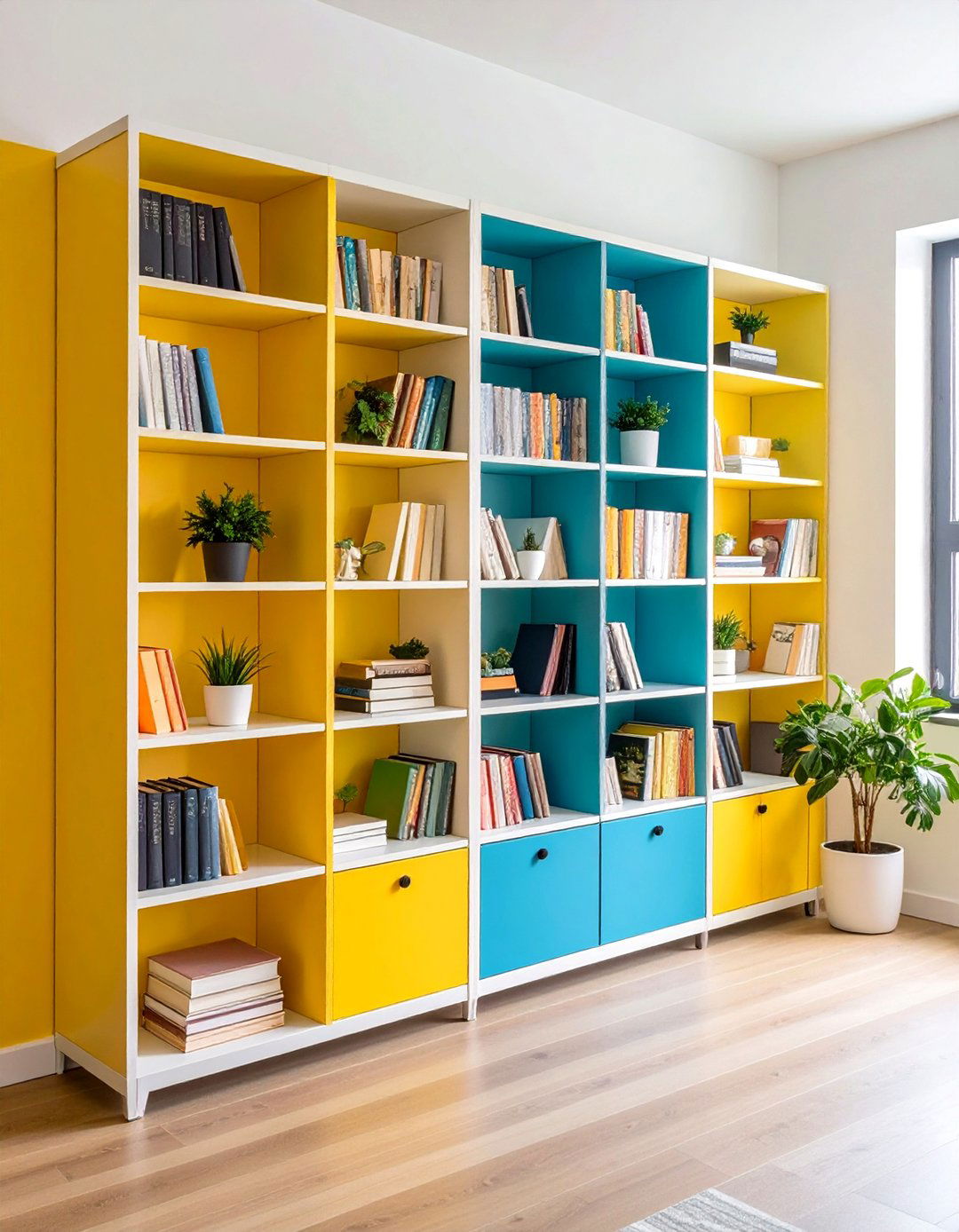
Combine physical books with digital catalogs and apps to create comprehensive library management systems that track both owned and wish-list titles. Use barcode scanning apps to catalog your collection, preventing duplicate purchases and helping locate specific books quickly. This method bridges traditional book collecting with modern technology for enhanced organization efficiency. Include QR codes or digital tags linking to reviews, reading dates, or personal notes about each book. Consider cloud-based systems that sync across devices, allowing collection access while shopping or traveling. Digital integration also enables easy sharing of book recommendations with friends and family. Include backup documentation for rare or valuable books with photos and condition reports stored securely online. This hybrid approach maximizes both physical organization and digital convenience for modern readers.
18. Travel and Adventure Book Collection

Create an inspiring travel section that organizes books by geographic region, adventure type, or dream destinations to fuel wanderlust and trip planning. Group travel guides, memoirs, and fiction set in specific locations together for comprehensive regional exploration. This method transforms your bookshelf into a virtual travel planning center that inspires future adventures. Include maps, travel journals, and destination photographs to enhance the travel theme and create immersive displays. Organize by continents, countries, or specific cities depending on your collection size and travel interests. Feature books about recent trips prominently while keeping future destination guides easily accessible for planning purposes. Include language learning materials, cultural guides, and historical references for deeper destination understanding. This organization style works particularly well for frequent travelers, travel bloggers, or anyone dreaming of future adventures.
19. Professional Development Library Organization

Establish a dedicated professional development section that organizes career-related books by skill area, industry, or career stage to support ongoing growth and learning. Group books by categories such as leadership, communication, technology, finance, or industry-specific knowledge. This method creates a personal resource center that supports career advancement and skill development. Keep current industry publications and recent releases prominently displayed while archiving outdated materials appropriately. Include sections for inspiration, networking guides, and personal development alongside technical skills resources. This organization style proves invaluable for entrepreneurs, executives, or anyone committed to lifelong learning. Consider organizing by urgency or current relevance, with immediately applicable resources in prime locations. Include space for professional journals, conference materials, and printed research relevant to your field.
20. Mood-Based Reading Organization
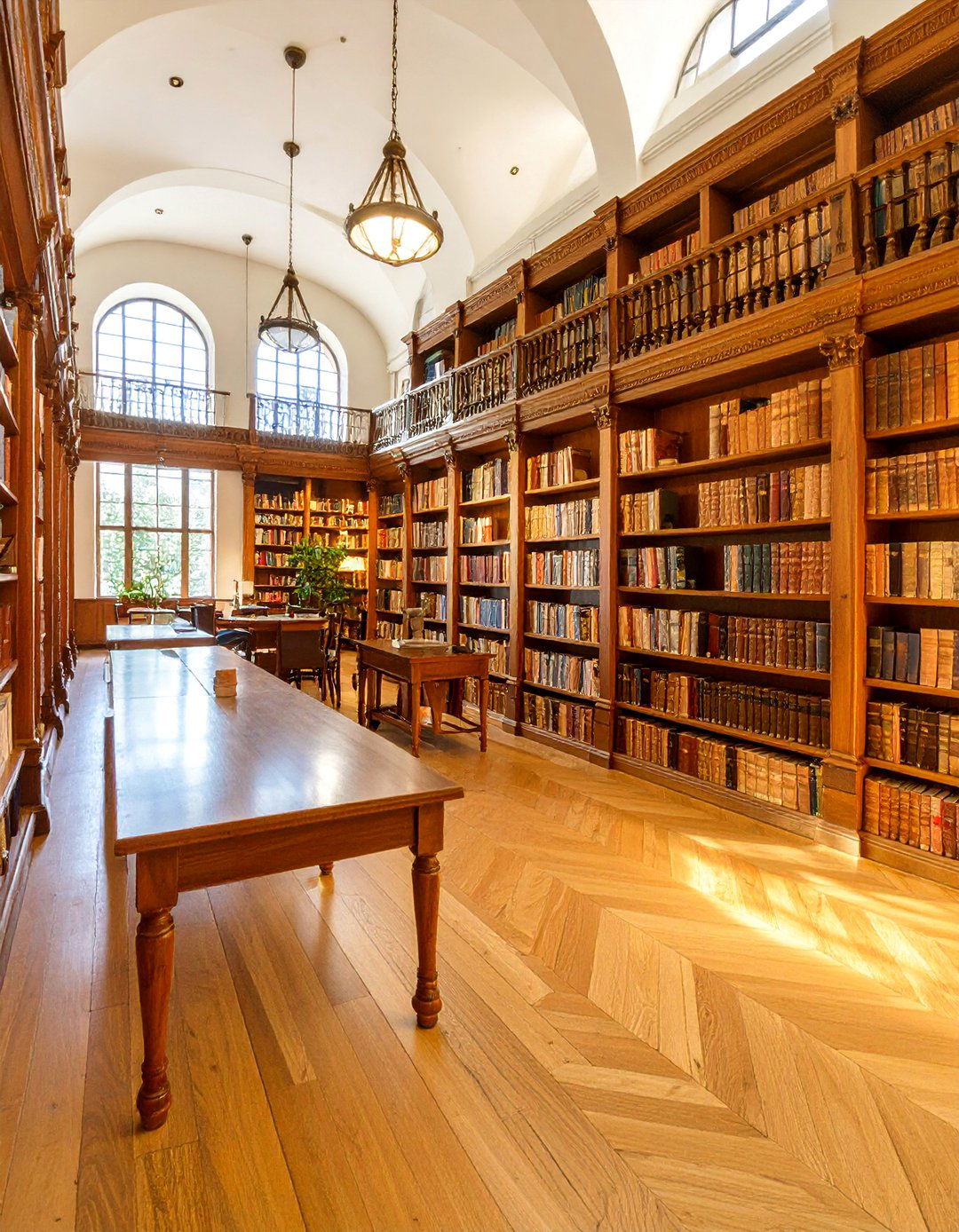
Organize books according to emotional themes and reading moods to simplify book selection based on current feelings and desired experiences. Create sections for uplifting reads, escapist fiction, thought-provoking literature, comfort reads, and inspiration sources. This method recognizes that reading choices often reflect emotional needs and current life circumstances. Include categories for stress relief, motivation, humor, and relaxation to address various psychological states through literature. Consider seasonal mood variations, with cozy winter reads separate from energizing summer selections. This organization style works particularly well for therapeutic reading, book therapy, or readers who use literature for emotional regulation. Include personal rating systems or mood tags to help remember how different books affected you previously. Create special sections for books that consistently provide comfort during difficult times or inspiration during challenging periods.
21. Horizontal Stacking Display Method

Implement strategic horizontal stacking to maximize space while creating interesting visual displays that break up traditional vertical book arrangements. Stack books in groups of three to five, varying stack heights to create dynamic compositions across your shelves. This method proves especially effective for oversized books, coffee table books, or collections with mixed dimensions that don't align well vertically. Use horizontal stacks as bases for decorative objects, creating layered displays that add depth and personality to your bookshelf. Consider color coordination within stacks for enhanced visual appeal, or organize stacks by theme for functional grouping. This approach works well in small spaces where traditional shelving doesn't accommodate all book sizes effectively. Include bookends or supports to maintain stack stability and prevent sliding or toppling.
22. Library-Style Card Catalog Organization

Create a sophisticated library atmosphere by implementing detailed cataloging systems that include author, title, genre, and location information for easy book retrieval. Develop a simple numbering or coding system that corresponds to shelf locations and book positions. This method appeals to readers who appreciate systematic organization and enjoy the nostalgic feel of traditional libraries. Include searchable databases or physical card systems that help locate specific books quickly, especially valuable for large collections. Consider color-coded labels or spine stickers that indicate different categories or reading statuses. This organization style works particularly well for serious readers, researchers, or anyone who frequently lends books to others. Include checkout systems for borrowed books and detailed acquisition records for collection management. The systematic approach ensures no book gets lost or forgotten in extensive collections.
23. Minimalist Curation Organization

Adopt a minimalist approach that focuses on carefully curated book selections rather than comprehensive collections, emphasizing quality over quantity in your bookshelf organization. Keep only books that truly deserve space, regularly evaluating and rotating your collection to maintain freshness and relevance. This method creates clean, uncluttered displays that highlight each book's importance and beauty. Organize the remaining books with ample white space between sections, allowing each title to breathe and stand out individually. Include only meaningful decorative elements that enhance rather than compete with your book selection. This approach works well for small spaces, frequent movers, or readers who prefer focused collections over extensive libraries. Consider digital alternatives for books you enjoyed but don't need to keep physically, maintaining accessibility without physical storage requirements.
24. Wheeled Cart Mobile Organization
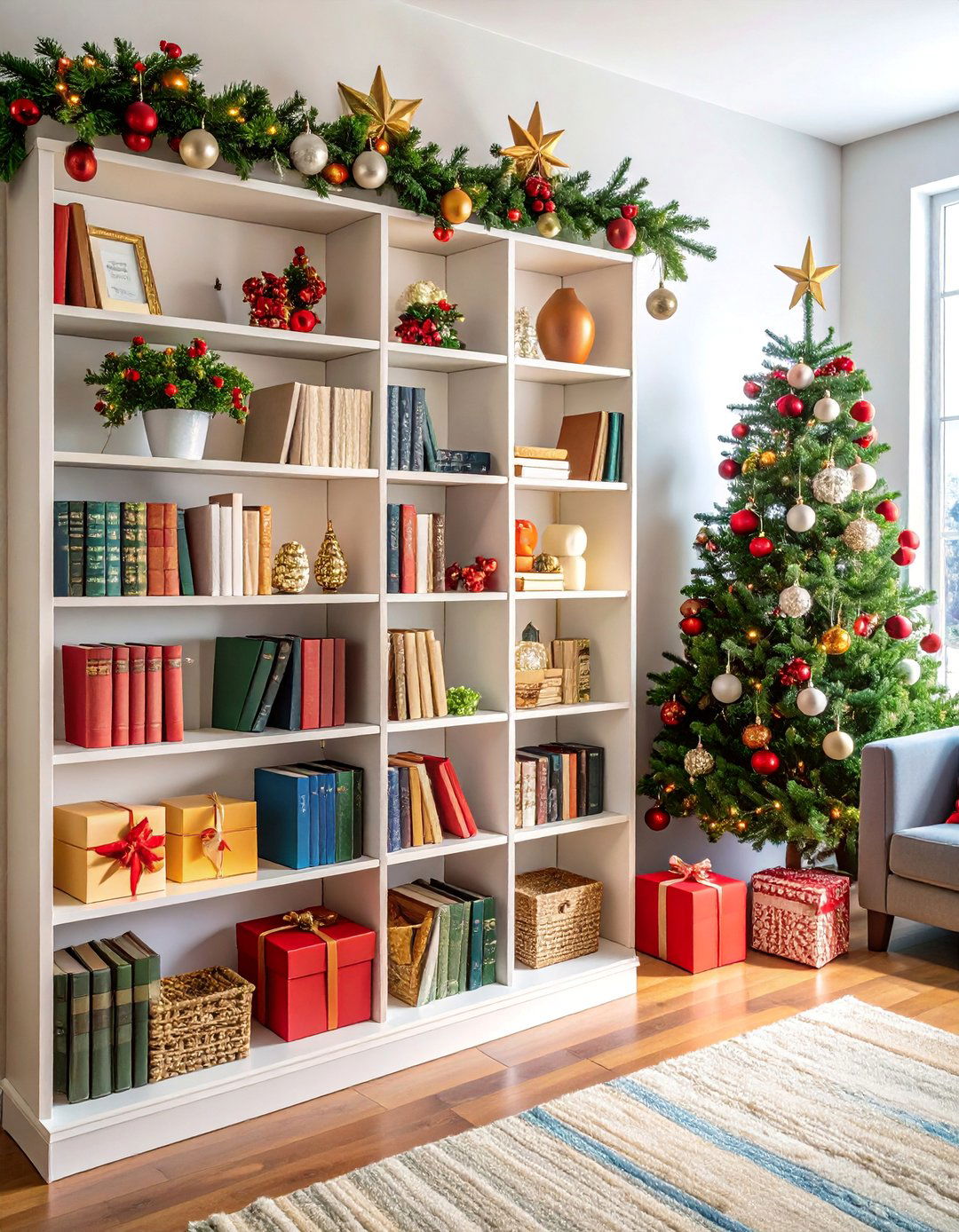
Utilize rolling carts and mobile storage solutions that can be moved throughout your home based on current reading needs and space requirements. This method provides flexible book storage that adapts to changing living situations and reading habits. Organize cart contents by current interests, seasonal reads, or frequently accessed references that benefit from mobility. Include different sized carts for various purposes: a small cart for bedside reading, a larger cart for living room browsing, or a kitchen cart for cookbooks and food magazines. This approach works particularly well for renters, small space dwellers, or anyone who enjoys reading in multiple locations throughout their home. Consider weather-resistant options for outdoor reading spaces or covered porches. Mobile organization also facilitates easy collection rearrangement and cleaning while providing storage flexibility that fixed shelving cannot match.
25. Hidden Storage Organization Solutions

Maximize space efficiency by incorporating hidden book storage solutions that maintain clean aesthetics while providing ample storage capacity for extensive collections. Utilize under-bed storage boxes, ottoman storage, window seat compartments, and hollow coffee tables to store books that aren't frequently accessed. This method keeps less-used books organized and protected while maintaining uncluttered living spaces. Include storage in unexpected places like under staircases, behind furniture, or in custom-built nooks that utilize architectural features creatively. Consider climate-controlled options for valuable books requiring special care, ensuring proper temperature and humidity levels in storage areas. This organization style works well for minimalists, small space residents, or anyone balancing extensive book collections with clean design preferences. Include inventory lists for hidden storage locations to maintain awareness of your complete collection and prevent forgetting stored treasures.
Conclusion:
Effective bookshelf organization transforms your reading collection into both functional storage and attractive display that reflects your personality and supports your reading habits. Whether you choose systematic alphabetical arrangements, vibrant color coordination, or creative storage solutions, the key lies in selecting methods that match your lifestyle and space constraints. Successful organization combines practical accessibility with visual appeal, ensuring your favorite books remain easily discoverable while creating inspiring environments that encourage continued reading. Remember that the best organizational system is one you'll actually maintain consistently, so choose approaches that feel natural and sustainable for your daily routines and long-term collection goals.


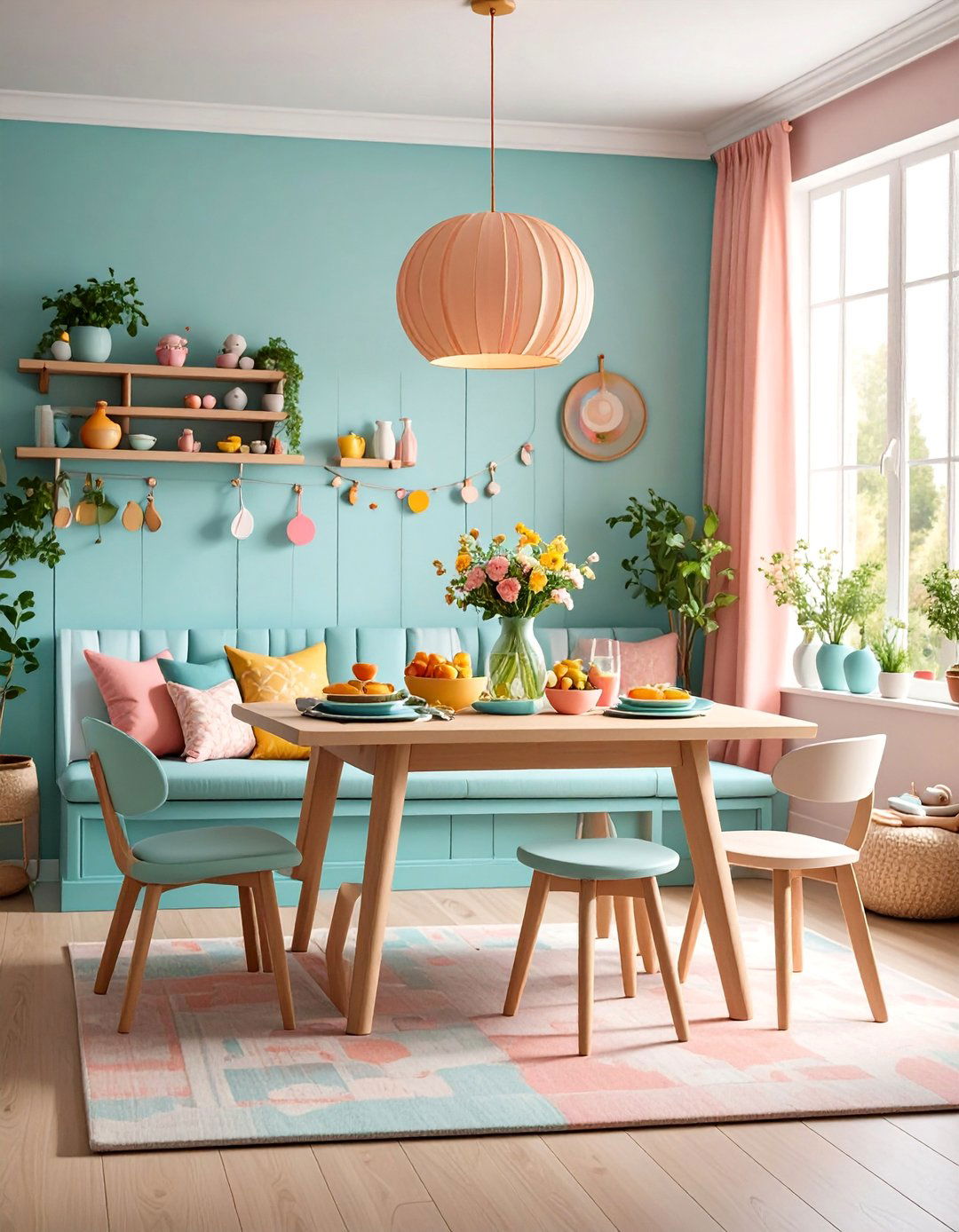


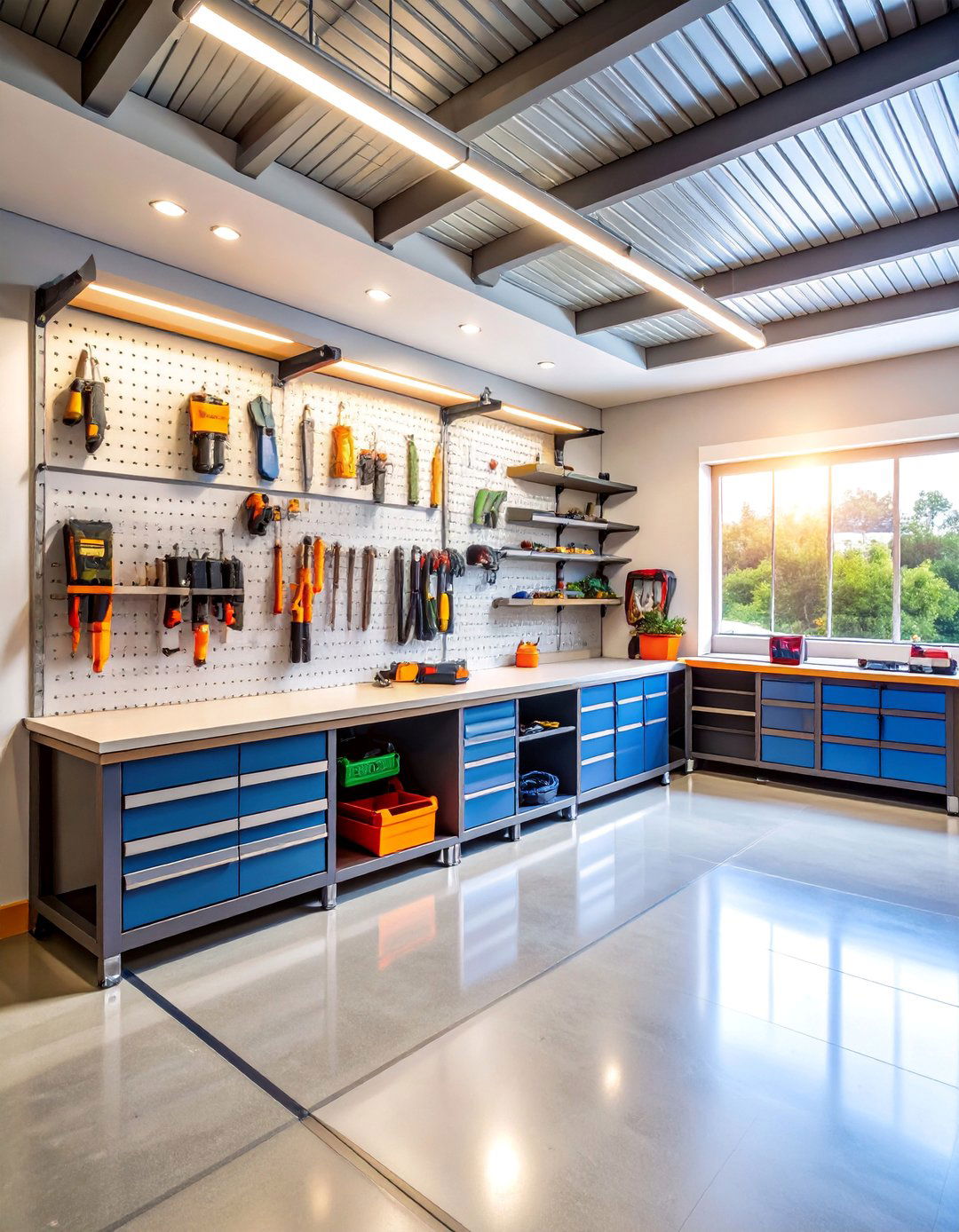
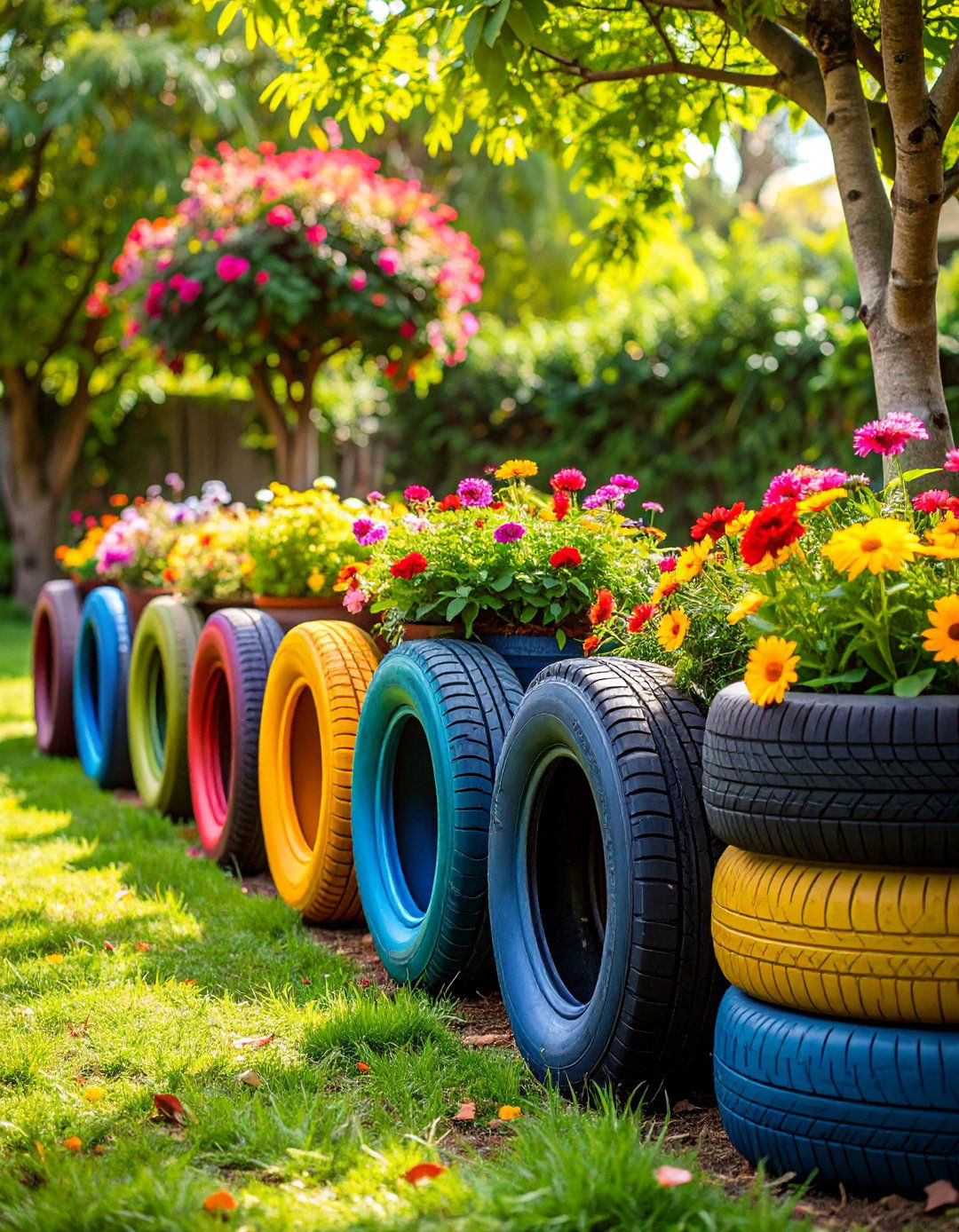

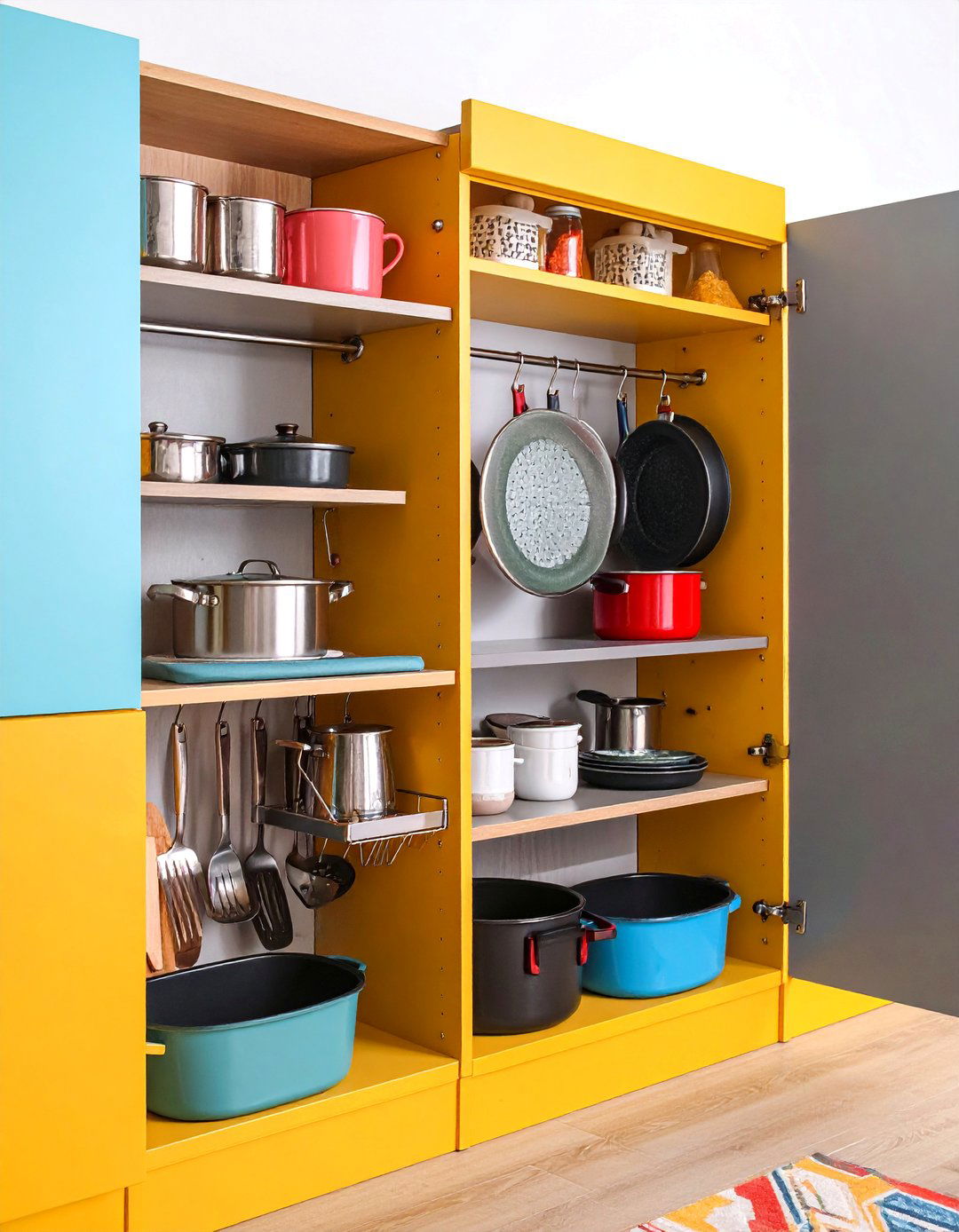




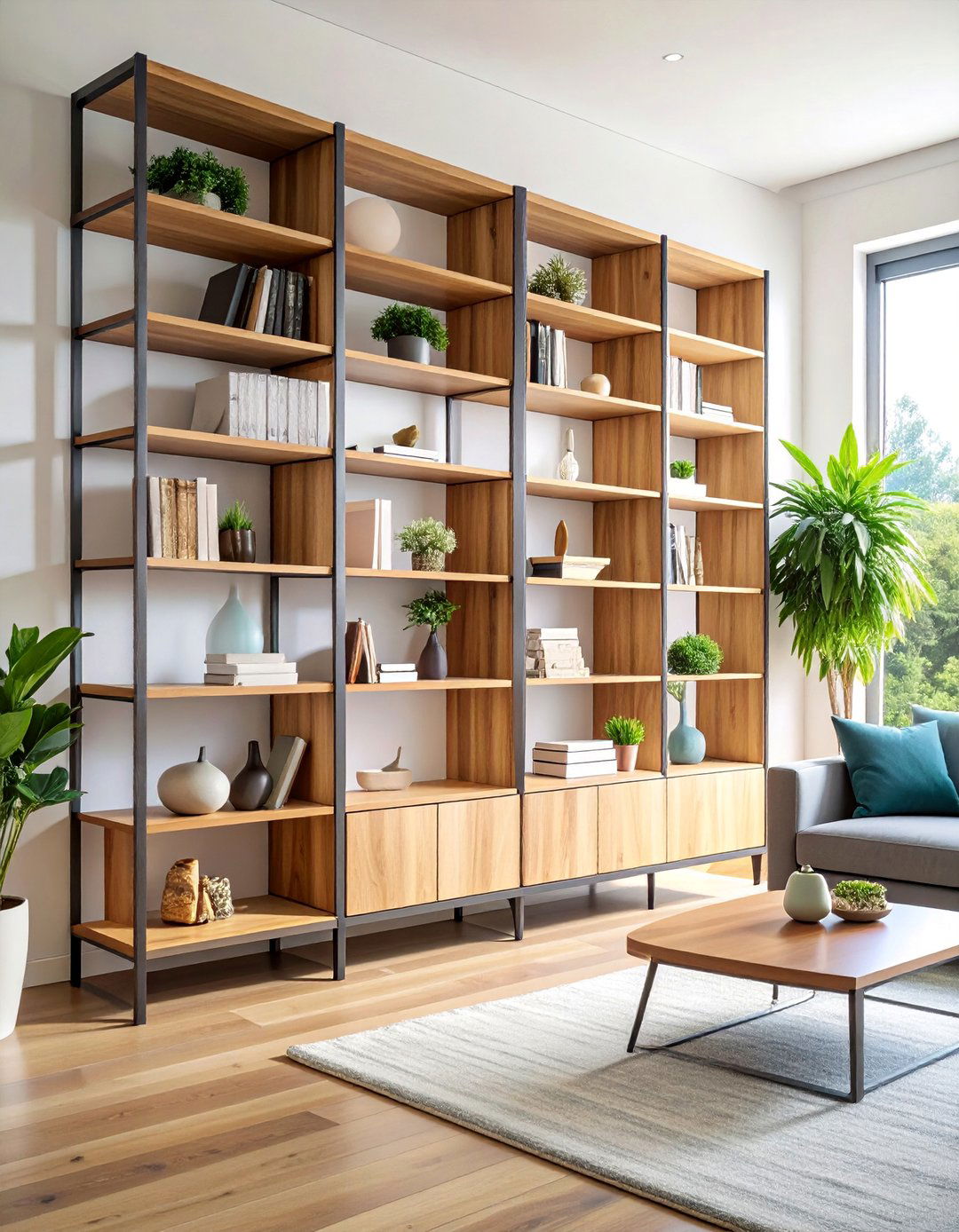



Leave a Reply